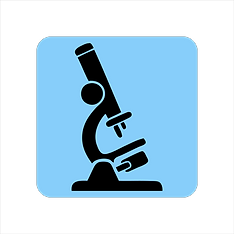We lost texture and tactile interaction
to smooth touchscreens
We lost touch...
Let's get back in touch
Welcome to
Tangible Surface Research
Creating next generation tactile machine interfaces - from simple modifications of touch surfaces to shape changing technology we call programmable surfaces

Research
Understanding the design, usage and implications of tactile surface interfaces.

Develop
Developing prototypes, virtual models, and physical models. Expanding our portfolio of user-centered tangible interface designs.

Promote
Promoting technology and commercial advances in the fields of programmable surfaces and tangible touchscreens.

HALOS® Tactile Icon Products
Based on feedback from the visually impaired community we developed products to help people with low or no vision use their touch surface appliances. Our tactile icon products are called HALOS - Home Appliance Labeling and Overlay System. Visit our HALOS page to learn more.
Over 5000 packages sold!
Tactile Icon Research and Development
Our research started with a crowd-funded experiment through Experiment.com. With the help of the Association for the Blind and Visually Impaired (ABVI) in Rochester, NY we recruited 12 visually impaired test subjects. Our testers evaluated four types of tactile interfaces - bump dots, touch plate, shaped bump dots (silicone tactile icons), and felt/foam shapes (tactile icons)
The results - tactile icons can greatly improve machine interfaces for people with low or no vision.
See our Experiment for details of the study.

A graph showing tactile icon usability question results.

A bar graph showing error rate of different tactile icon representations.

A graph showing tactile icon usability question results.

Programmable Surfaces
Programmable surfaces will create a new class of human-machine interfaces. We can bring back tactile buttons with one big difference - the controls can be dynamically generated on one surface.
Our founder, Anne DeWitte, studied programmmable surfaces for her master's thesis, "Investigation of dynamic three-dimensional tangible touchscreens: Usability and feasibility."
Using sighted test subjects, she compared tasks performed on a touch screen with the same tasks performed on a touch screen enhanced with tactile shapes.
Results - Programmable surfaces can play an important role in situations where visual attention is overloaded.
Ideas, Models, Visualizations

Programmable Surfaces
Most programmable surface designs are simply a grid of bumps that appear and disappear. We call those bumps SHape ELements (SHELs). Groups of SHELs form recognizable shapes on a surface.

MIT Inform Reimagined
MIT Media Lab created INFORM - "a Dynamic Shape Display that can render 3D content physically."
Very cool and very big. Their first presentation uses piezo actuation technology which can be bulky and a bit noisy.
Think what we could do if we miniaturize the SHELs and integrate illumination. Perhaps a dynamic keypad, game controller, and directional-pad?
Origami inspired SHEL
Since piezo actuation can be bulky and require significant power, we designed a folding SHEL.
U.S. Patent 9,927,786, "EXPANDABLE AND COLLAPSIBLE SHAPE ELEMENT FOR A PROGRAMMABLE SHAPE SURFACE"

Digital tactile icons
Now we understand static tactile icons, can we form them on a programmable surface? Our tactile icon research and development created a framework for digital tactile icons. This work guides our hardware development and we look forward to presenting a functional and commercially viable programmable surface.
What's next?
Stay tuned! There is more to come...
If you are interested in our work or have questions, let us know!
